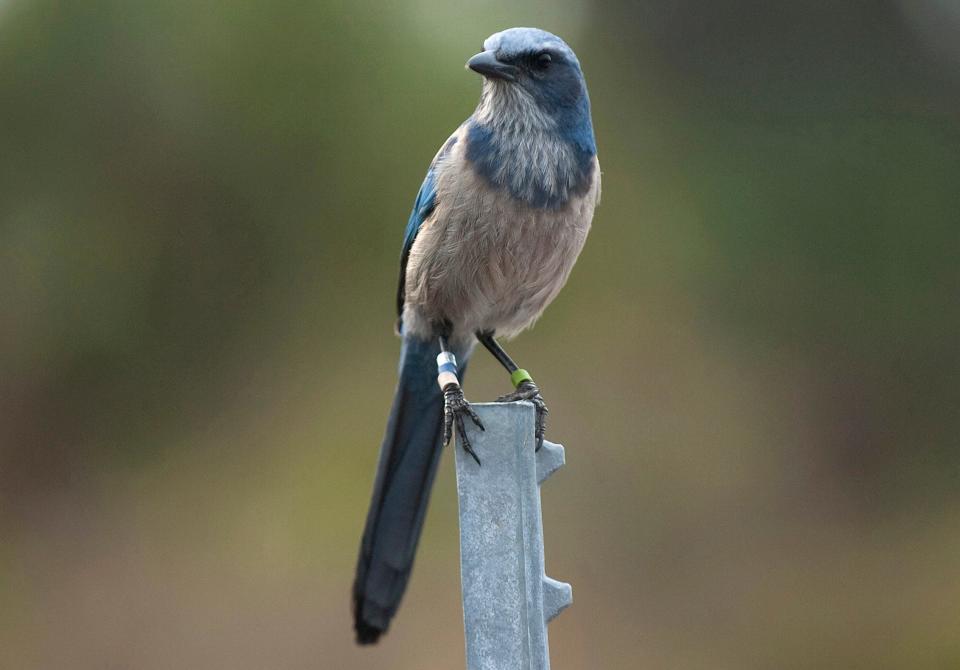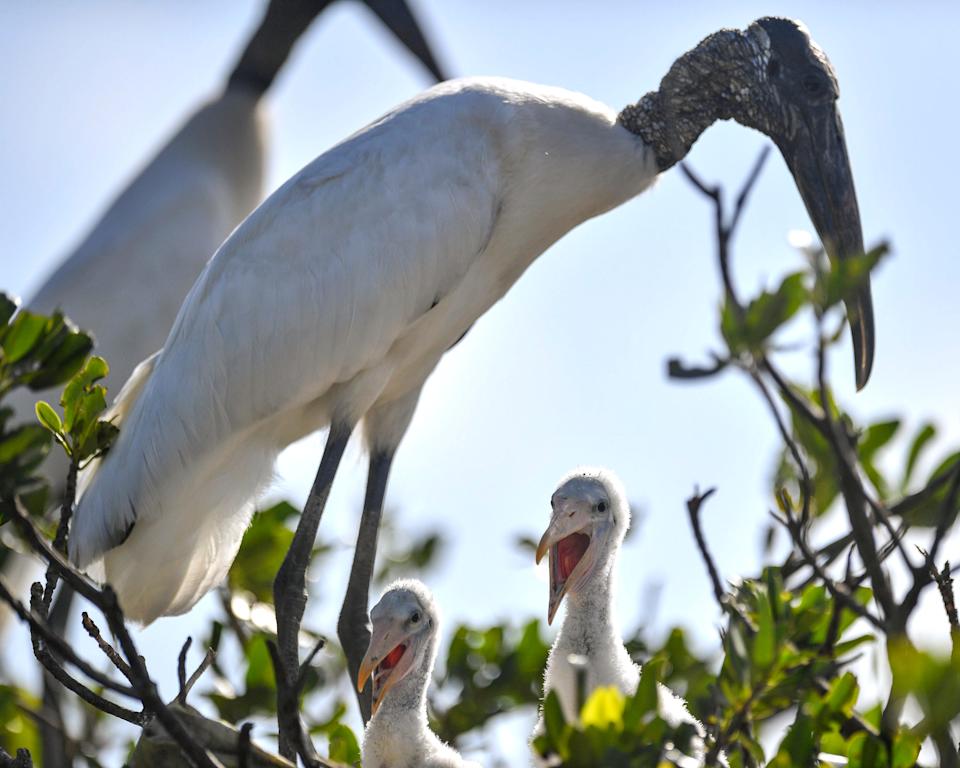These 4 native Florida birds are threatened or facing extinction. Here's what to know
While America's birds remain under siege, what Florida birds are at risk of endangerment? Here are the four Florida birds scientists are trying to protect.
What bird is only found in Florida?

The Florida Scrub-Jay is the only endemic or native bird to Florida. Despite being classified as a threatened species by Florida in 1975 and by the federal government in 1987, the Scrub-Jay continues to face population decline. The bird thrives in high, dry and well-drained areas known as scrublands which rely on fire to maintain its arid environment, according to the Florida Audubon Society.
Land acquisition programs in Florida have grown to protect scrublands in Brevard, Lake, Orange and Seminole counties, but efforts to restore previous scrublands will be crucial to restore the bird’s population, the Florida Audubon Society said on its site.
In case you missed it: Southwest Florida Eagle Cam: Everything to know as the season gradually comes to a close
More on Florida birds: It's hummingbird season in Florida. Here are 7 things to know about these amazing birds
What birds are protected by law in Florida?
Under the Migratory Bird Act Treaty Act, all bird species — migratory and residents alike — are protected. Meaning, no intentional take of these birds, their eggs, their nests and young are allowed without appropriate authorization.
What's the difference between federally endangered and federally threatened?
More than 3 billion birds have been lost in the U.S. since 1970 and dozens of species are considered endangered, threatened or at risk.
Federally endangered means that a species is in danger of extinction, while federally threatened means that a species is likely to become endangered in the near future, according to the Florida Audubon Society.
What is the No. 1 threat to birds?
Habitat loss, invasive species and human activities have impacted the decline of birds, but many species continue to decline without scientists being able to figure out why.
Being able to identify why birds die is crucial in preventing extinction for beloved bird species, according to Road to Recovery, an organization that focuses on recovery of the nation's most rapidly declining birds.
What other Florida birds are in trouble?
Found nowhere else but Florida, the Florida Grasshopper Sparrow has been once dubbed "North America's Most Endangered Bird." It relies exclusively on Florida dry prairie habitat, which more than 85% of has been destroyed.

It has vanished from 10 Florida counties and its habitat is fragmented. Available population estimates vary widely from 7,500 to 11,000. It thrives in the Ocala National Forest where conservation efforts have protected large areas of its habitat.
Everglade Snail Kite
Snail Kites feed almost exclusively on apple snails, a freshwater mollusk in Central and South Florida wetlands, including the Everglades, according to the Florida Audubon Society. Draining in these areas have led to the demise of the bird with it being listed by Florida and the federal government as an endangered species.

The Florida Audubon Society is working to restore river grass in Snail Kites’ main habitat – the Florida Everglades. Efforts to restore the health Lake Okeechobee aim to increase Snail Kite nesting to boost population numbers.
Wood Stork
One of Florida’s signature wading birds, the Wood Stork is another bird that has suffered from the destruction of state wetlands, according to the Florida Audubon Society. It’s classified as a threatened bird by Florida and the federal government.

The bird feeds in shallow water, swirling its pink feet and grabbing any small prey that tries to escape with its beak. The drowning of wetlands has led to an altered cycle of high and low water, making it difficult for Wood Storks to find food for their babies, who eventually starve to death.
This article originally appeared on Sarasota Herald-Tribune: Florida birds threatened with extinction include four native ones

